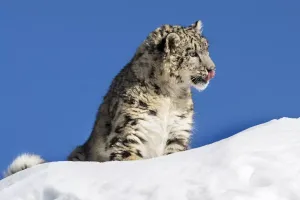Camels live mostly in desert areas and are a species of even-toed camelid. They are commonly known as dromedaries and Bactrian camels.
However, there are also hybrid camels without humps.
Camels were first domesticated in 300 B.C. and became a powerful tool for humans to cross the desert.
The lifespan of a camel is about 40-50 years, and adult camels are about 1.8 meters tall with a hump of over 2 meters.
Don't underestimate the slow pace of camels. They can run at a maximum speed of over 65 km/h and can reach 30-40 km/h for long-distance running.
What exactly is the camel's hump for?
The camel's hump cannot store water at all. But the fat inside of the hump can be oxidized to water and it requires a lot of oxygen.
Of course, this can be solved by the camel's breathing. So is this the way how camels convert fat into water? Actually, no.
Because camel breathing also takes a lot of water vapor from the lungs.
Although camels have a special structure that contains a large amount of water, camels do not rely on this process to obtain water.
This is because the fat of the hump is much more useful.
Camels can drink tens of liters of water at a time, and store the water in a water bladder in the rumen.
Because of the osmotic pressure, drinking large amounts of water at one time can cause the water to enter the cells and rupture, leading to a life-threatening condition.
The special structure of the camel does not cause the problem. It is the camel's water storage mechanism.
A camel can never have too much water. Because water consumption is so huge in the desert, it is needed to store the water.
Camels have several dazzling water-saving abilities as follows.
1. The camel's kidney function is superb and its urine is extremely concentrated.
2. The camel's feces is extremely dry and it doesn't waste the water in its excrement!
3. The camel's body temperature reaches 41 degrees during the day, and it will only sweat as long as it is above this body temperature.
So the camel can be extremely drought tolerant, and the fat left in its hump is the energy reserve.
It can also survive for long periods without eating, just consuming the fat in its hump.
If you see a camel's hump dry out, it means that the camel hasn't eaten for a long time.
The camel's keen sense of smell identifies water sources 20 kilometers away, giving it a much better chance of survival when crossing the desert than a human with a large bag of mineral water on his back.
This is how experts explain that camels do not need a strong ability to distinguish between various odors because there are not many odors to distinguish in the desert.
So it is not a problem that the camel has a low number of olfactory receptor genes.
It is stronger than a mouse and even stronger than a dog when it comes to smelling water and other green plants!
So following the camel to find water is reliable.


